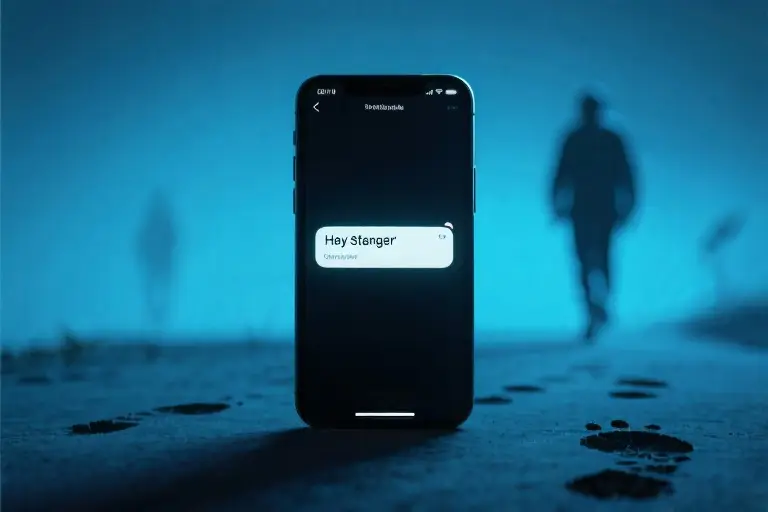You’ve probably heard the saying that it takes months or even years to truly understand someone’s character. Friendships deepen over shared experiences, relationships grow through challenges overcome together, and workplace dynamics reveal themselves gradually over time.
But what if we told you that the most revealing insights about a person’s personality don’t require years of observation? What if you could spot crucial personality traits in just ten seconds of meeting someone new?
Psychological research suggests that our first impressions, formed within mere seconds of meeting someone, often contain remarkably accurate assessments of personality traits. This isn’t about superficial judgments or relying on vague ‘gut feelings’ – it’s about understanding the science behind rapid personality assessment and learning which behavioral cues actually matter.
In this guide, we’ll show you how to quickly read people by focusing on three key behavioral signals that reveal more than hours of conversation might. These evidence-based observation techniques will help you navigate social situations more effectively, whether you’re meeting a potential business partner, going on a first date, or simply trying to understand your coworkers better.
Forget the old adage about ‘taking time to know someone.’ Modern psychology demonstrates that brief but strategic observations can give you powerful insights into personality traits, social styles, and even hidden motivations. The secret lies in knowing exactly what to look for in those critical first moments of interaction.
By the end of this article, you’ll have a practical framework for making faster, more accurate assessments of the people you meet – all based on observable behaviors rather than guesswork. These skills won’t just save you time in your social and professional relationships; they’ll help you avoid costly misjudgments and connect more effectively with everyone from colleagues to potential romantic partners.
Let’s explore how ten seconds can tell you more about a person than ten hours of small talk ever could.
Why 10-Second Observations Beat “Time Reveals All”
We’ve all heard the old adage that it takes months or years to truly know someone. Conventional wisdom suggests you need shared experiences, deep conversations, and countless interactions to form an accurate judgment of character.
Here’s the psychological truth: your brain makes surprisingly accurate snap judgments within seconds of meeting someone – and research shows these first impressions often hold more water than assessments formed over time.
The Science of Thin-Slicing
Harvard psychologist Nalini Ambady demonstrated this phenomenon through her groundbreaking “silent teacher” study. Participants watched muted 10-second clips of professors lecturing and rated their teaching effectiveness. Remarkably, these snap judgments correlated strongly with end-of-semester evaluations from actual students who’d spent months in those professors’ classrooms.
This “thin-slicing” ability – our brain’s capacity to extract meaningful patterns from brief experiences – operates through:
- Microexpression detection: We subconsciously register fleeting facial expressions that reveal true emotions
- Behavioral clustering: Certain gestures and postures naturally group together (e.g., crossed arms + minimal eye contact = defensive)
- Evolutionary efficiency: Our ancestors needed rapid threat assessment for survival
Why Time Can Deceive
While prolonged exposure seems like it should provide more accurate insights, it often introduces cognitive biases:
- Confirmation bias: Once we form an initial impression, we selectively notice evidence that supports it
- Halo effect: One positive trait (e.g., attractiveness) colors our perception of unrelated qualities
- Situational masking: People adapt behavior over time to match social expectations
Consider this: Have you ever been surprised when a normally cheerful coworker snaps under pressure? That “out of character” moment might actually reveal their true stress response patterns – behaviors that were always present but temporarily masked by social adaptation.
The 10-Second Advantage
Brief observations capture raw, unfiltered behavior before:
- Social filters activate
- Conscious impression management begins
- Contextual expectations shape actions
Next time you meet someone, try this: Pause after the initial greeting and consciously note:
- Their baseline energy level (animated/reserved)
- How they occupy space (expansive/contained)
- Where their attention goes (scanning the room/focused on you)
These immediate behavioral signatures often provide more authentic personality clues than carefully curated anecdotes shared over lunch. In our next section, we’ll break down exactly which 10-second signals matter most and how to interpret them across different social contexts.
The 10-Second Observation Checklist: 3 Behavioral Signals You Can’t Afford to Miss
We’ve established that first impressions form faster than you can brew a cup of coffee. Now let’s break down exactly what to watch for during those critical first moments. These three behavioral modules work like a psychological trifecta – when you notice patterns across multiple categories, your accuracy skyrockets.
Module 1: Room Entry Body Language – The Unconscious Theater
How someone crosses a threshold reveals more than their shoe preference. Watch for these three archetypes:
The Spotlight Seeker
- Telltale signs: Exaggerated movements (think jazz hands entering a boardroom), vocal volume dialed to ‘stage whisper’, that dramatic pause before greeting anyone.
- Psychology behind it: Not necessarily extroversion – often signals deep-seated validation needs. Studies show these individuals score high on ‘attention craving’ personality scales.
- Pro tip: Notice if they check reactions after entering. True confidence doesn’t need audience feedback.
The Human Ghost
- Telltale signs: Wall-hugging trajectory, bag clutched like a shield, delayed eye contact (if any).
- Psychology behind it: Could indicate social anxiety, but might simply reflect introversion. Key differentiator? Watch their shoulders – genuine anxiety shows in raised, tense shoulders even during ‘safe’ interactions.
- Pro tip: These individuals often have razor-sharp observation skills themselves. Underestimate them at your peril.
The Equilibrium Master
- Telltale signs: Natural stride (not too slow/fast), warm but not overeager greetings, situational awareness without predatory scanning.
- Psychology behind it: These rare unicorns typically score high on emotional intelligence assessments. Their behavior indicates secure attachment styles developed in early childhood.
- Pro tip: When you spot one, observe how they modulate behavior across different contexts – masters adapt without losing core authenticity.
Module 2: Unobserved Moments – The Truth Leaks Out
Psychology’s dirty little secret? People can’t maintain facades indefinitely. These micro-behaviors during ‘downtime’ reveal authentic selves:
The Phone Reflex
- What to watch: How quickly they reach for devices when conversation lags. Immediate grabbers often struggle with discomfort during silences.
- Next-level insight: Check what they do with it – scrolling social media suggests different traits than checking work emails.
- Exception alert: Cultural differences matter here. In some Asian cultures, phone-checking during pauses is considered polite (avoiding pressure on others).
The Engagement Mirage
- What to watch: Their face when others speak. Authentic listeners show subtle ‘micro-nods’ (about 60-80 bpm) and pupil dilation. Fake listeners maintain fixed smiles with occasional delayed head tilts.
- Science says: Princeton researchers found people can detect fake listening within 700 milliseconds based solely on eyebrow movements.
The Power Leak
- What to watch: How they occupy space when unobserved. Dominant personalities expand (leaning back, arms behind head), insecure ones make protective shapes (crossed limbs, minimized posture).
- Bonus tell: Watch where their feet point – toward someone indicates interest, toward exits signals disengagement.
Module 3: Verbal Fingerprints – What Words Reveal
Language patterns form behavioral fingerprints. Track these metrics:
The Pronoun Ratio
- Key metric: Frequency of “I” vs “we/you” in first conversations. High “I” users tend toward narcissistic traits (study shows 60% more first-person pronouns in narcissists’ speech).
- Context matters: Job interviewees understandably use more “I” – compare to social settings for accurate baselines.
Topic Tetris
- What to watch: How they handle conversational transitions. Empathic individuals use ‘bridges’ (“That reminds me…”), while controllers employ ‘overrides’ (abrupt topic changes).
- Pro tip: Notice if they return to abandoned topics later – this signals true listening versus performative interest.
The Compliment Map
- What to watch: What they choose to praise. Those complimenting achievements over traits tend toward growth mindsets. Example: “You worked hard on that” vs “You’re so talented.”
- Psychology hack: Narcissists often give backhanded compliments that subtly reference themselves (“You’re almost as funny as I am!”).
Cross-Module Verification: The 2/3 Rule
For reliable judgments, require signals from at least two modules before forming conclusions. Example:
- Scenario: Someone enters loudly (Module 1) but uses mostly “we” statements (Module 3) and shows genuine listening micro-expressions (Module 2).
- Interpretation: Likely an enthusiastic team player rather than an attention-seeker.
This systematic approach transforms gut feelings into actionable insights – exactly what makes the 10-second method more reliable than months of casual interaction.
Real-World Applications: Reading People in 10 Seconds Across Different Settings
Now that you’ve mastered the core techniques of rapid personality assessment, let’s explore how to apply these skills in three critical areas of modern life: professional environments, dating scenarios, and social gatherings. Each setting presents unique behavioral cues that, when properly interpreted, can give you remarkable insight into someone’s character within those crucial first moments of interaction.
Workplace Wisdom: Decoding Office Dynamics
In professional settings, understanding someone’s behavioral patterns can help you navigate office politics, build better teams, and communicate more effectively. Here’s what to watch for:
1. Meeting Hierarchy Signals
Notice who speaks first in meetings – it’s rarely random. The person who initiates discussion often holds informal power beyond their official title. Conversely, team members who consistently wait to speak until higher-ups have voiced opinions may be signaling either respect for hierarchy or lack of confidence in their own ideas.
2. The Notebook Test
Watch how colleagues take notes during presentations. Those who jot down key points while maintaining eye contact demonstrate active engagement. Those whose pens never touch paper might be disinterested or overconfident in their memory. The rare individual who takes verbatim notes? Likely anxious about missing details.
3. Email Response Patterns
While not part of the initial 10-second assessment, early email exchanges reveal personality traits. Immediate, brief responses often come from decisive types, while delayed, meticulously crafted messages suggest perfectionist tendencies.
Dating Decoder: First Impression Red Flags and Green Lights
Romantic contexts require special sensitivity in observation. These subtle cues can save you from months of heartache:
1. The Menu Moment
When handed a menu, does your date immediately zero in on options (decisive/controlling) or defer completely (people-pleasing)? The balanced individual will glance at selections while maintaining conversation flow.
2. Beverage Body Language
Watch how they hold their drink. A loose, comfortable grip suggests confidence, while white-knuckling the glass indicates nervousness. Frequent straw-chewing or ice-crunching often signals anxiety.
3. The Check Dance
When the bill arrives, observe their reaction before either of you speak. Immediate wallet reach suggests traditional values, hesitation may indicate financial stress, while complete indifference could signal entitlement.
Social Savvy: Party Behavior Breakdown
Casual gatherings provide rich opportunities for personality observation:
1. The Greeting Gradient
Note how people handle introductions. The ‘double-hugger’ (both arms) typically seeks deep connections, while the ‘side-hugger’ maintains emotional distance. Handshake firmness correlates with confidence levels more accurately than most realize.
2. Drink Choice Dynamics
While not definitive, beverage selection often reflects personality. Craft cocktail enthusiasts usually value uniqueness, beer loyalists tend toward tradition, and wine choosers often prioritize sophistication (or want to appear sophisticated).
3. Group Conversation Patterns
Watch for ‘conversational tennis’ – how evenly someone volleys discussion. Constant topic-steering indicates self-centeredness, while passive listening suggests disinterest or social anxiety. The ideal communicator asks follow-up questions and builds on others’ points.
Cross-Context Cues: Universal Tells
Certain behaviors translate across all settings:
1. Phone Check Frequency
Multiple glances at their device during initial interaction signals either inflated self-importance or social discomfort. The truly engaged keep phones out of sight.
2. The Compliment Test
Notice what they choose to compliment first – your appearance (superficial focus), your accomplishments (competitive nature), or your ideas (intellectual connection).
3. Laughter Lag Time
Genuine laughter begins immediately, while forced chuckles have a slight delay. This micro-behavior reveals authenticity levels.
Remember: These observations form probability assessments, not absolute judgments. Always look for multiple confirming signals before drawing conclusions. With practice, you’ll develop remarkably accurate first impressions that serve you well in every social context.
Why Your 10-Second Judgment Might Be Wrong (And How to Fix It)
That confident first impression you formed in ten seconds? It might be completely off. While rapid personality assessment works surprisingly well, our brains are wired with blind spots that can distort snap judgments. Here’s how to spot—and correct—the most common errors.
The Cultural Lens Problem
Consider eye contact:
- In North America: Seen as confidence and honesty
- In Japan: Prolonged eye contact = aggression or disrespect
- In Middle Eastern cultures: A sign of active listening
A Scandinavian executive’s reserved demeanor might read as “cold” to a Brazilian colleague, while an American’s firm handshake could feel “overbearing” to someone from Thailand. These aren’t personality traits—they’re cultural scripts.
Quick fix: Before interpreting any signal, ask yourself:
- Is this behavior consistent across different settings?
- Does their cultural background offer alternative explanations?
The Halo Effect Trap
That well-dressed stranger who held the door for you? Your brain automatically assumes they’re also intelligent, kind, and competent—even with zero evidence. This “halo effect” causes us to overweight initial positive impressions.
Case study: Research shows attractive people are consistently rated as more trustworthy, despite no actual correlation between looks and character.
Antidote: Force yourself to look for contradictory signals. If someone seems charming, specifically watch for:
- How they treat service staff
- Whether their compliments feel generic or personalized
- If their stories always cast them as the hero
The Confirmation Bias Spiral
Once we decide someone is “arrogant” or “shy,” we unconsciously seek evidence to confirm that label while ignoring contradictory behavior. This explains why first impressions can become self-fulfilling prophecies.
Behavioral reset: Adopt these three habits:
- The Two-Signal Rule: Never conclude based on a single observation. Require at least two unrelated behaviors pointing the same way.
- Context Calibration: Note how their behavior changes in different settings (work vs. social events).
- Assumption Audit: Regularly ask: “What’s one way my initial take could be wrong?”
When 10 Seconds Isn’t Enough
Some personalities reveal themselves more slowly. Watch for these delayed-tell scenarios:
- The slow-warm introvert: May seem disinterested at first but becomes engaged over time
- The socially anxious extrovert: Initial awkwardness gives way to gregariousness
- The context-shifter: Behavior radically changes when moving from professional to personal settings
Pro tip: Create mental “pending” categories for people who don’t fit clear patterns. Reassess after three interactions.
Your Personal Bias Inventory
We all have invisible filters affecting our judgments. Complete this quick self-assessment:
| Bias Type | Your Likely Blind Spot | Correction Strategy |
|---|---|---|
| Similarity | Overrating people who share your hobbies/background | Seek opinions from someone different from you |
| Contrast | Judging someone based on who they’re with | Observe them alone first |
| Mood | Letting your current emotions color perceptions | Delay judgment when stressed/tired |
Remember: The goal isn’t perfect accuracy—it’s recognizing when to pause your snap judgments. As psychologist Daniel Kahneman notes, “The confidence people have in their beliefs is not a measure of the quality of evidence, but of the coherence of the story they can tell.” Your 10-second assessment works best when you treat it as a working hypothesis, not a final verdict.
Put It Into Practice: Your 10-Second Personality Challenge
Now that you’ve learned the science behind rapid personality assessment, it’s time to put theory into action. This isn’t about becoming judgmental – it’s about developing conscious observation skills that can transform your social interactions.
Your Mission:
- Choose one public space (coffee shop, office lobby, or social event)
- Observe how three different people enter the space
- Categorize them using our framework:
- Attention-Seeker: Dramatic entrance, space-claiming posture
- Wallflower: Hesitant movement, minimized physical presence
- Balanced Operator: Natural flow, situational awareness
- Note one confirming behavior within their first minute
Pro Tip: Carry a small notebook or use your phone to jot down observations. The key is specificity – instead of “seems confident,” note “stood with weight evenly distributed while scanning room.”
Why This Works
Behavioral psychologists at Harvard found that consistent micro-observation training can improve personality assessment accuracy by up to 40%. You’re not just learning tricks – you’re rewiring your perception to notice meaningful details.
Common Pitfalls to Avoid:
- Don’t jump to conclusions after one signal (wait for cluster of behaviors)
- Remember context matters (someone might be distracted for good reason)
- Check your biases (we often mislabel shyness as coldness)
From Observation to Insight
As you collect data, you’ll start noticing patterns:
- How restaurant hosts greet different customer types
- Why some colleagues always choose certain seats in meetings
- What your date’s entry behavior reveals about their communication style
“Movement doesn’t lie. The body knows truths the mouth hasn’t learned to speak yet.” – Dr. Ellen Bass, nonverbal communication researcher
Keep Exploring
For those who want to dive deeper:
- The Silent Language of Leaders – decoding power dynamics in professional settings
- What Every BODY is Saying – FBI-trained behavior analysis techniques
- The Definite Guide to Reading People – combining psychology with practical observation drills
Start small. Tomorrow morning, analyze just one person’s entrance. Within weeks, you’ll find yourself understanding people faster than you thought possible – not in months, but in moments.





